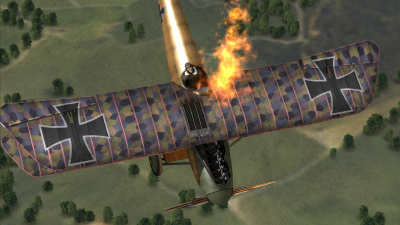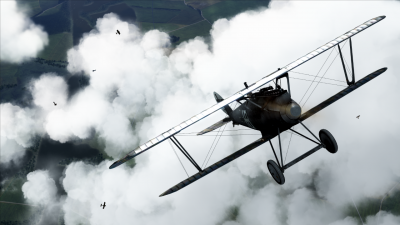Atmospheric pressure is a fascinating thing. It gets complicated pretty quickly, but here’s the basic gist - the air closer to the ground is denser because the free-roaming molecules that make up the gases we call air are packed in closer together. There’s just more of it in less space. Now: start walking up a mountain, and pretty soon your lungs will tell you that there’s less air to breathe. For each breath you draw into your lungs, you’re getting less oxygen. For a given amount of space, there are just less of those air molecules knocking around.
Still with me? Good.
An internal combustion engine, like the one found in your car (or in a prop-powered aircraft) needs a careful combination of air and gasoline to be compressed, and ignited, to produce power. Too little air and too much gas (called a “rich” mixture), and the engine runs rough. Too little fuel and not enough air (“lean”), and the engine usually overheats and feels anemic.
That’s all set up mechanically so that air will draw just the right amount of fuel into the engine as it gets sucked in. All well and good down here on the ground, but what if, say you crack the open throttle on your Sopwith fighter plane and climb a few thousand feet? Now, atmospheric pressure - that fickle mistress - shows up; the engine literally can’t suck in as much air as it needs. So you have to alter the ratios of that mixture.
By now you’re probably wondering what the hell this has to do with Rise of Flight. And the answer is… everything.
It’s not uncommon for a game to push you through a quick tutorial (although physical game manuals have largely fallen out of style). In Rise of Flight, however, you have to learn a crash course on internal combustion engines and atmospheric pressure just to start your plane’s engine on the runway.
And do you know what? That’s the way it should be.
No, really. Hear me out. In most other games (even a lot of flight simulators), it’s just a matter of punching “X” to start a vehicle’s engine. Steal a car in Grand Theft Auto, and odds are the game just assumes your character is the world’s fastest hot-wire on the planet (never mind that most modern cars essentially require a computer hack to boost).
That mechanic works great for open world games like GTA. Even for a period-piece like LA Noire, it’s nice to play in an idealized world where everything works the way it should - imagine if Cole had to pump the gas and pull the choke every time he’s involved in a high-speed chase, and you begin to see what I mean.
But Rise of Flight does force you do just that. Better still, because aircraft of the First World War were little more than canvas and wood with an engine bolted on, you’re able to see everything operating mechanically. On some aircraft, you can actually see individual valves tapping away on top of the engine - you won’t see that today even if you look under the hood of your car with the engine running.
Actually, it’s a real testament to the animators and historical researchers over at 777 Studios, because almost every physical control you can adjust in real life you can also fiddle with in the game.
Does being able to see the guts of your aircraft make Rise of Flight a better game? Besides adding to the immersion of flying an oily tinderbox, no, not really. Purists will shout me down for this, but that level of detail doesn’t really add much to the core game mechanics.
What it does offer is something much more. In a world of Candy Crush and Call of Duty knock-offs, Rise of Flight will actually teach you something. Bury your head far enough into a game like this (friends have made similar arguments to me about historical RTS titles like Rome: Total War and Company of Heroes), and you’ll find yourself suddenly spouting knowledge you never knew you’d learned in the first place.
Hell, what I learned about fuel mixture from Rise of Flight helped me work on a motorcycle repair in the real world. On the surface it’s a simple concept - X amount of fuel to Y amount of air means a happy engine - but one that I had no other tangible way of interacting with outside of games. I can honestly say that videogames taught me more about basic, practical mechanics than most of my formal education. Okay, sure, Dad tried to teach me a little when the tractor-mower would inevitably die every winter; but that was usually just a matter of holding a flashlight steady while he dug bits of mouse-nest from the air filter. Good times.
Back to Rise of Flight. There’s an argument to be made that you almost can’t call this a game. Even though they’ve evolved alongside traditional games since the beginning (Microsoft Flight Simulator ‘95, how I loved thee), it’s always been a niche market. Anyone who has tried to play a complex flight sim with only a keyboard and mouse will understand why.
So I have to recommend hyper-realistic sims like Rise of Flight with some trepidation. Besides the usual warnings that games like this become a serious time-suck, the learning curve is well… see my point about air pressure and fuel mixture.
But if you pick up a game like Rise of Flight (and I can’t emphasize enough how cheap these games are right now), give it ago. It just might change the way you think about how things work.



